Your cart is currently empty!
Tag: Measures

Overcoming Obstacles: Implementing Effective Business Continuity Measures in Data Centers
Data centers are the backbone of modern businesses, providing the infrastructure necessary for storing and processing vast amounts of data. However, they are also vulnerable to a variety of threats that can disrupt operations and put critical information at risk. In order to ensure the continuity of business operations, it is essential for data center managers to implement effective business continuity measures.One of the biggest obstacles to implementing effective business continuity measures in data centers is the sheer complexity of the systems involved. Data centers typically house a wide array of hardware, software, and networking equipment, all of which must work together seamlessly to ensure the smooth operation of the facility. Any disruption to one part of the system can have cascading effects that impact the entire data center.
To overcome this obstacle, data center managers must take a holistic approach to business continuity planning. This means not only considering individual components of the data center, but also how they interact with each other and with external systems. By conducting a thorough risk assessment and identifying potential points of failure, managers can develop a comprehensive strategy for mitigating risks and ensuring the continuity of operations.
Another key obstacle to effective business continuity in data centers is the constant evolution of technology. As new hardware and software solutions are introduced, data center managers must continually update and adapt their business continuity plans to account for these changes. This can be a daunting task, particularly for data centers that rely on legacy systems or have limited resources for implementing new technologies.
To overcome this obstacle, data center managers should prioritize ongoing training and education for their staff. By staying up-to-date on the latest developments in data center technology, employees can better identify potential risks and develop strategies for mitigating them. Additionally, data center managers should establish partnerships with vendors and industry experts who can provide guidance on best practices for business continuity planning.
Finally, one of the biggest obstacles to effective business continuity in data centers is the threat of cyber attacks. Data centers are prime targets for hackers seeking to steal sensitive information or disrupt operations, and a successful attack can have devastating consequences for a business. In order to protect against these threats, data center managers must implement robust cybersecurity measures and constantly monitor for potential vulnerabilities.
To overcome this obstacle, data center managers should invest in state-of-the-art cybersecurity solutions, such as firewalls, intrusion detection systems, and encryption technologies. They should also regularly conduct penetration testing and vulnerability assessments to identify and address potential weaknesses in their systems. By taking a proactive approach to cybersecurity, data center managers can minimize the risk of a cyber attack and ensure the continuity of business operations.
In conclusion, implementing effective business continuity measures in data centers can be a challenging task, but it is essential for ensuring the smooth operation of a business. By taking a holistic approach to risk assessment, staying up-to-date on the latest technology developments, and prioritizing cybersecurity, data center managers can overcome the obstacles to business continuity and protect their operations from potential disruptions.
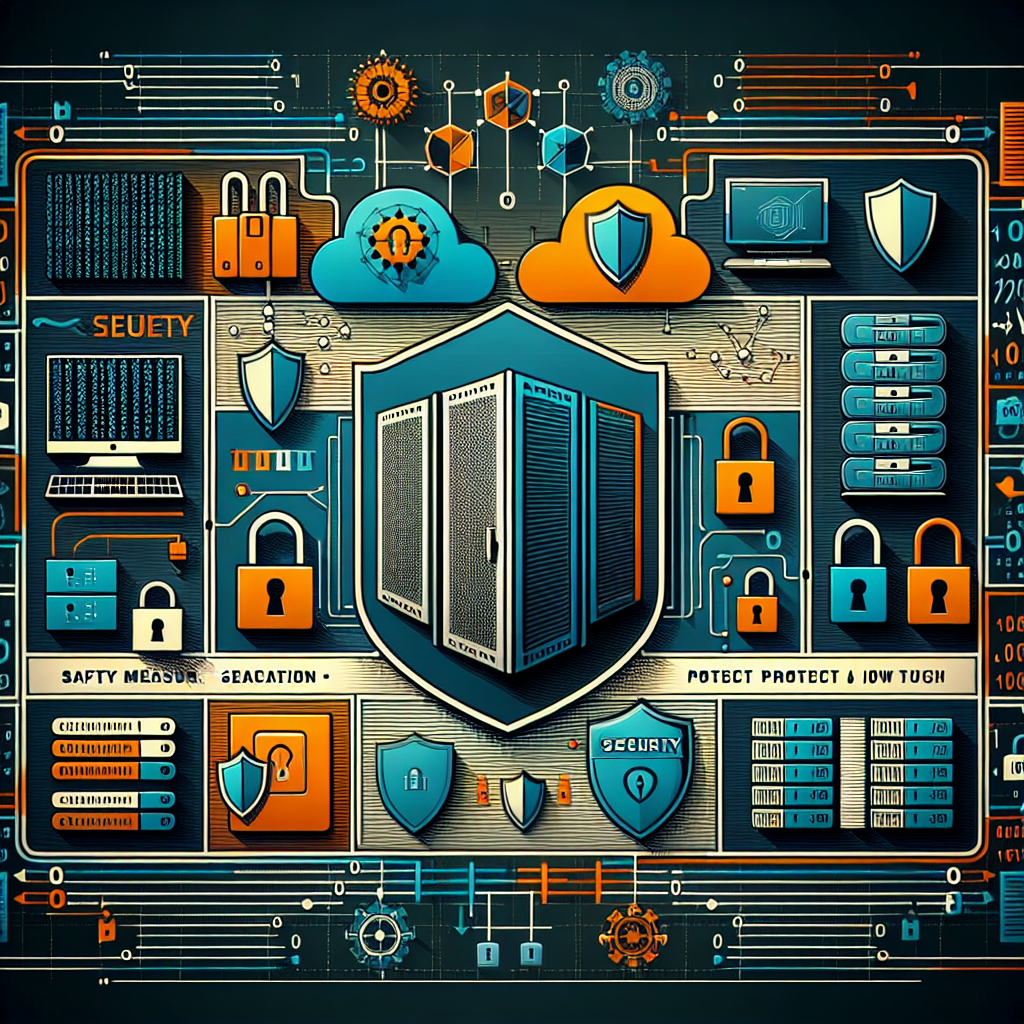
Protecting Your Investment: The Role of Safety Measures in Data Center Operations
Data centers play a critical role in today’s digital world, serving as the backbone of information storage and processing for businesses of all sizes. With the increasing reliance on data centers for everyday operations, it has become more important than ever to ensure the safety and security of these facilities.One of the key aspects of safeguarding a data center is implementing robust safety measures. These measures are essential for protecting the valuable equipment, data, and personnel within the facility. By investing in the right safety protocols, data center operators can minimize the risk of accidents, downtime, and data breaches, ultimately safeguarding their investment.
One of the most critical safety measures in data center operations is fire prevention and suppression. Data centers house a significant amount of electrical equipment, which can be a fire hazard if not properly maintained. Implementing fire detection systems, automatic sprinklers, and fire-resistant building materials can help minimize the risk of a fire breaking out and spreading throughout the facility.
Another important safety measure is ensuring proper cooling and ventilation systems are in place. Data centers generate a substantial amount of heat due to the constant operation of servers and other equipment. Without adequate cooling systems, overheating can occur, leading to equipment failure and potential fires. Regular maintenance and monitoring of cooling systems can help prevent these issues and ensure the smooth operation of the data center.
Physical security measures are also crucial for protecting data centers from unauthorized access and theft. Access control systems, surveillance cameras, and security guards can help deter intruders and ensure only authorized personnel are allowed entry into the facility. By implementing these security measures, data center operators can prevent data breaches and theft of sensitive information.
Additionally, data centers should have comprehensive disaster recovery and business continuity plans in place. These plans outline how the facility will respond to and recover from various emergencies, such as natural disasters, power outages, and cyber attacks. By having a solid plan in place, data center operators can minimize downtime and ensure the continuity of their operations in the event of a disaster.
In conclusion, safety measures play a crucial role in protecting the investment in data center operations. By implementing robust fire prevention and suppression systems, ensuring proper cooling and ventilation, implementing physical security measures, and having comprehensive disaster recovery plans, data center operators can safeguard their facilities and the valuable data within. Investing in safety measures not only protects the data center itself but also the reputation and trust of the businesses that rely on its services.
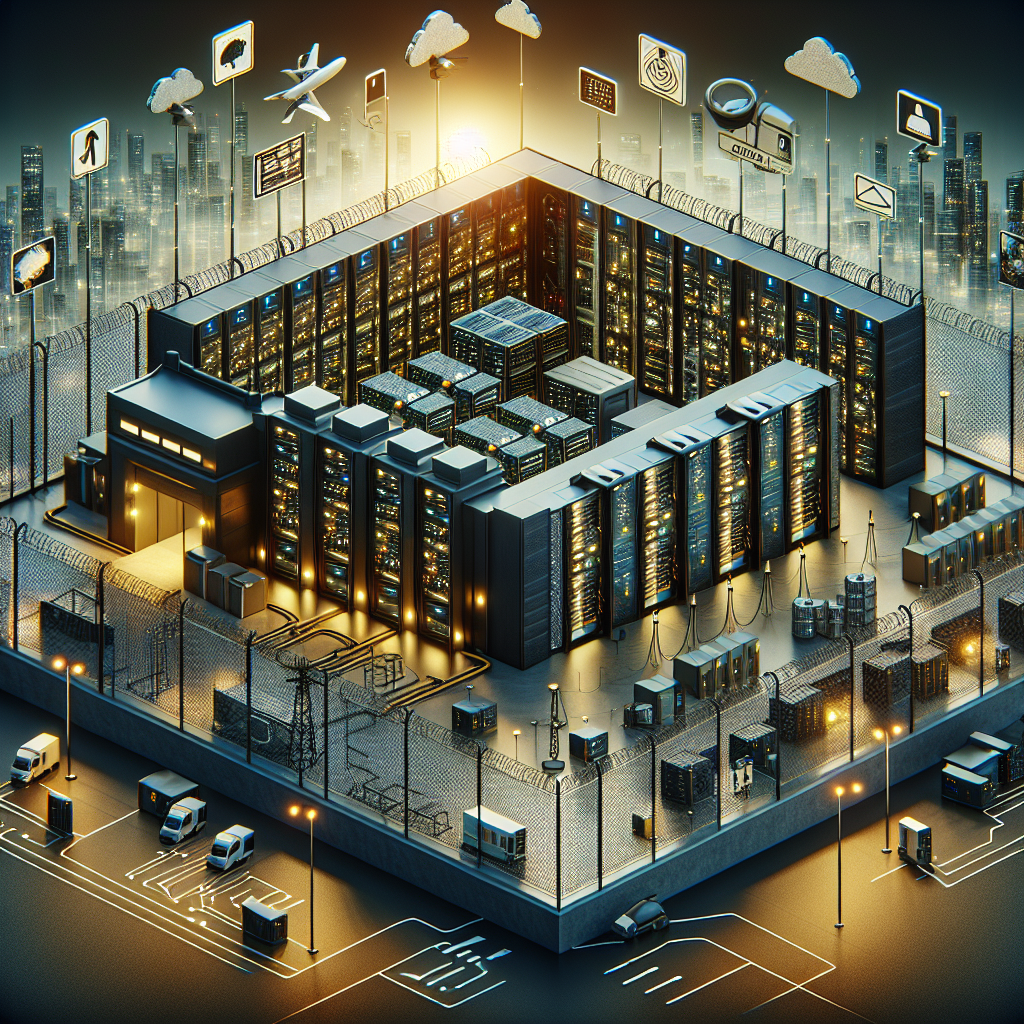
Protecting Your Data Center: Safety Measures Every Business Should Take
Data centers are the backbone of any business, housing critical information and systems that keep operations running smoothly. With the rise of cyber threats and data breaches, it is more important than ever for businesses to prioritize the security of their data centers. Here are some safety measures every business should take to protect their data center:1. Implement Access Controls: Limiting access to the data center is crucial in preventing unauthorized individuals from gaining entry. Implementing access controls such as keycard entry, biometric authentication, and surveillance cameras can help monitor and restrict access to only authorized personnel.
2. Regularly Update Security Software: Keeping security software up to date is essential in protecting against the latest threats and vulnerabilities. Ensure that firewalls, antivirus software, and intrusion detection systems are regularly updated to safeguard against cyber attacks.
3. Conduct Regular Security Audits: Regular security audits can help identify any weaknesses or vulnerabilities in the data center’s security infrastructure. Conducting penetration tests and vulnerability assessments can help proactively address any security gaps before they are exploited by malicious actors.
4. Backup Data Regularly: Data loss can occur due to various factors such as hardware failure, natural disasters, or cyber attacks. Regularly backing up data both on-site and off-site can ensure that critical information is protected and can be easily recovered in the event of a breach or disaster.
5. Train Employees on Security Best Practices: Employees are often the weakest link in data security, as human error can lead to unintentional data breaches. Providing regular training on security best practices, such as password hygiene, phishing awareness, and data handling procedures, can help mitigate the risk of insider threats.
6. Monitor and Log Activity: Monitoring and logging all activity within the data center can help detect any suspicious behavior or unauthorized access. Implementing a security information and event management (SIEM) system can provide real-time alerts and analysis of security events to quickly respond to any potential threats.
7. Physical Security: In addition to cyber security measures, physical security of the data center is equally important. Securing the building with alarms, surveillance cameras, and access controls can help prevent unauthorized physical access to the data center.
By implementing these safety measures, businesses can protect their data centers from potential threats and ensure the security and integrity of their critical information. Prioritizing data center security is essential in today’s digital age, where the risks of cyber attacks and data breaches are ever-present.

Preventative Measures: How to Avoid Data Center Downtime through Maintenance
Data centers are the heart of modern businesses, housing critical data and infrastructure that keep operations running smoothly. However, data center downtime can be a costly and disruptive event that can have serious consequences for a company’s bottom line. In order to prevent downtime and keep your data center running smoothly, regular maintenance is essential.Preventative maintenance is the key to avoiding data center downtime. By implementing a proactive approach to maintenance, businesses can identify and address potential issues before they become major problems. This helps to minimize the risk of downtime and ensure that data center operations continue to run smoothly.
There are several preventative measures that businesses can take to avoid data center downtime through maintenance. One of the most important steps is to regularly inspect and maintain critical components of the data center, such as cooling systems, power supplies, and networking equipment. By conducting routine inspections and addressing any issues that arise, businesses can prevent potential problems from escalating and causing downtime.
In addition to regular maintenance, businesses should also establish a comprehensive maintenance schedule that outlines when specific tasks need to be performed. This schedule should include regular maintenance tasks, such as cleaning filters, checking for loose connections, and testing backup systems, as well as more in-depth maintenance tasks, such as replacing aging equipment and upgrading software.
Monitoring is another important aspect of preventative maintenance. By implementing monitoring systems that track key performance metrics, businesses can quickly identify potential issues and take corrective action before they lead to downtime. Monitoring systems can provide real-time insights into the health and performance of the data center, allowing businesses to proactively address issues and prevent downtime.
Finally, businesses should also have a plan in place for responding to emergencies and unexpected downtime. By establishing a comprehensive disaster recovery plan that outlines how to quickly restore operations in the event of a data center outage, businesses can minimize the impact of downtime and ensure that critical operations can resume as quickly as possible.
In conclusion, preventative maintenance is essential for avoiding data center downtime and keeping operations running smoothly. By implementing a proactive approach to maintenance, businesses can identify and address potential issues before they become major problems, minimizing the risk of downtime and ensuring that data center operations continue to run smoothly. By regularly inspecting and maintaining critical components, establishing a maintenance schedule, implementing monitoring systems, and having a comprehensive disaster recovery plan in place, businesses can effectively prevent downtime and keep their data centers running smoothly.
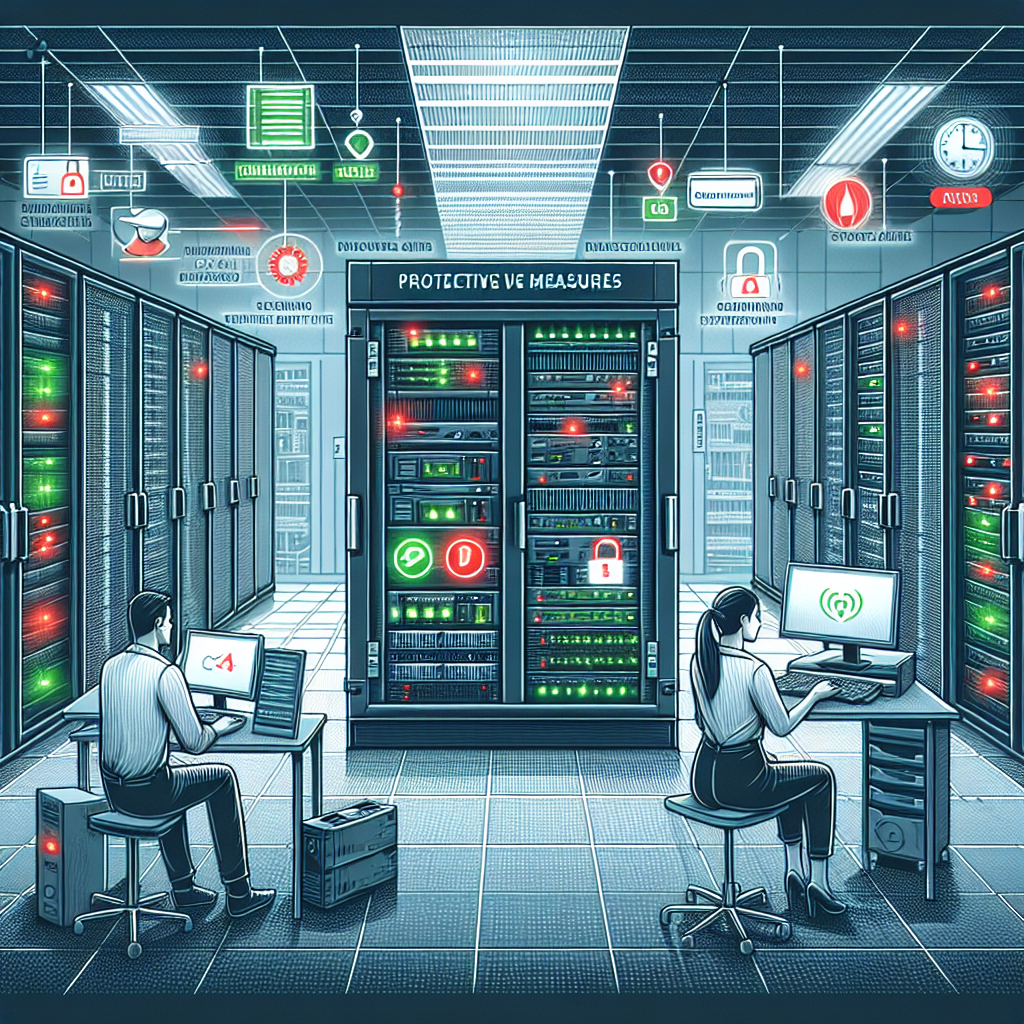
Protecting Your Data Center: Essential Safety Measures and Protocols
Data centers are the backbone of modern businesses, housing critical information and applications that keep organizations running smoothly. With the increasing amount of sensitive data being stored in data centers, it has become more important than ever to ensure the safety and security of these facilities. Implementing essential safety measures and protocols is crucial in protecting your data center from potential threats and ensuring the integrity of your data.One of the first steps in safeguarding your data center is to have a comprehensive security plan in place. This plan should include physical security measures such as access controls, surveillance cameras, and alarms to prevent unauthorized access to the facility. Limiting access to only authorized personnel and implementing strict access control policies can help mitigate the risk of breaches and unauthorized entry.
In addition to physical security measures, it is important to also focus on cybersecurity measures to protect your data center from cyber threats. Implementing firewalls, encryption, and intrusion detection systems can help detect and prevent cyber attacks that target your data center. Regularly updating and patching software and operating systems can also help prevent vulnerabilities that cyber criminals may exploit.
Regularly backing up your data is another essential safety measure to protect your data center. In the event of a disaster or data breach, having backups of your data can help minimize downtime and data loss. It is important to have a robust data backup and recovery plan in place to ensure that your data is secure and accessible in case of emergencies.
Implementing disaster recovery and business continuity plans are also crucial in protecting your data center. These plans outline procedures and protocols to follow in the event of a disaster or data breach, ensuring that your data center can quickly recover and resume operations. Testing these plans regularly can help identify any gaps or weaknesses in your security measures and ensure that your data center is prepared for any unforeseen events.
Overall, protecting your data center requires a combination of physical security measures, cybersecurity measures, data backup and recovery plans, and disaster recovery and business continuity plans. By implementing these essential safety measures and protocols, you can ensure the safety and security of your data center and protect your organization’s critical data and assets.
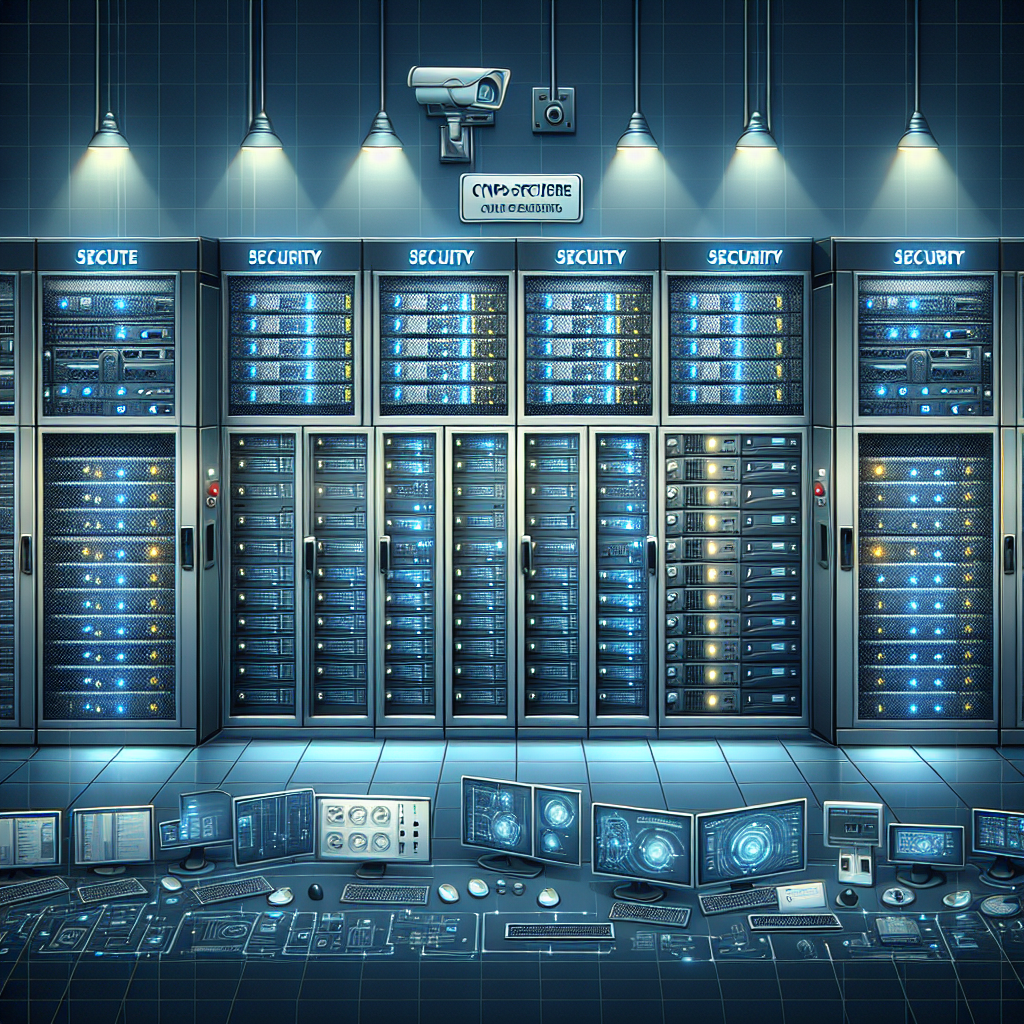
Protecting Your Assets: Essential Safety Measures for Data Centers
Data centers are critical infrastructure for many businesses, housing valuable data and equipment that are essential for operations. With the increasing threat of cyber attacks and natural disasters, it is more important than ever to implement strong safety measures to protect your assets and ensure business continuity. Here are some essential safety measures to consider for your data center:1. Physical security: Data centers should have robust physical security measures in place to prevent unauthorized access. This can include perimeter fencing, access control systems, surveillance cameras, and security guards. Limiting access to only authorized personnel can help prevent theft or tampering with equipment.
2. Fire detection and suppression: Data centers are at risk of fire due to the large amount of electronic equipment and wiring present. Installing fire detection systems, such as smoke detectors and heat sensors, can help alert staff to potential fires early on. Additionally, having fire suppression systems, such as sprinklers or gas-based suppression systems, can help extinguish fires quickly and prevent damage to equipment.
3. Climate control: Data centers require precise temperature and humidity control to ensure optimal performance of equipment. Monitoring systems should be in place to alert staff of any deviations from the ideal conditions. Regular maintenance of heating, ventilation, and air conditioning (HVAC) systems is essential to prevent overheating and equipment failure.
4. Redundant power supply: Power outages can cause significant downtime and data loss in data centers. Implementing redundant power supplies, such as uninterruptible power supply (UPS) units and backup generators, can provide an additional layer of protection against power disruptions. Regular testing of backup power systems is crucial to ensure they are functioning properly.
5. Data backup and recovery: Regularly backing up data and having a robust data recovery plan in place is essential for protecting against data loss. Data centers should have secure backup systems in place, both on-site and off-site, to ensure that critical data can be recovered in the event of a disaster or cyber attack.
6. Disaster recovery planning: In addition to data backup and recovery, data centers should have a comprehensive disaster recovery plan in place. This plan should outline procedures for responding to various types of disasters, such as natural disasters, cyber attacks, or equipment failures. Regular testing and updating of the disaster recovery plan is essential to ensure its effectiveness.
By implementing these essential safety measures, data center operators can protect their assets and ensure the continued operation of critical infrastructure. Investing in security, fire detection, climate control, power redundancy, data backup, and disaster recovery planning can help mitigate risks and safeguard valuable data and equipment. Data centers are the backbone of many businesses, and protecting them should be a top priority.
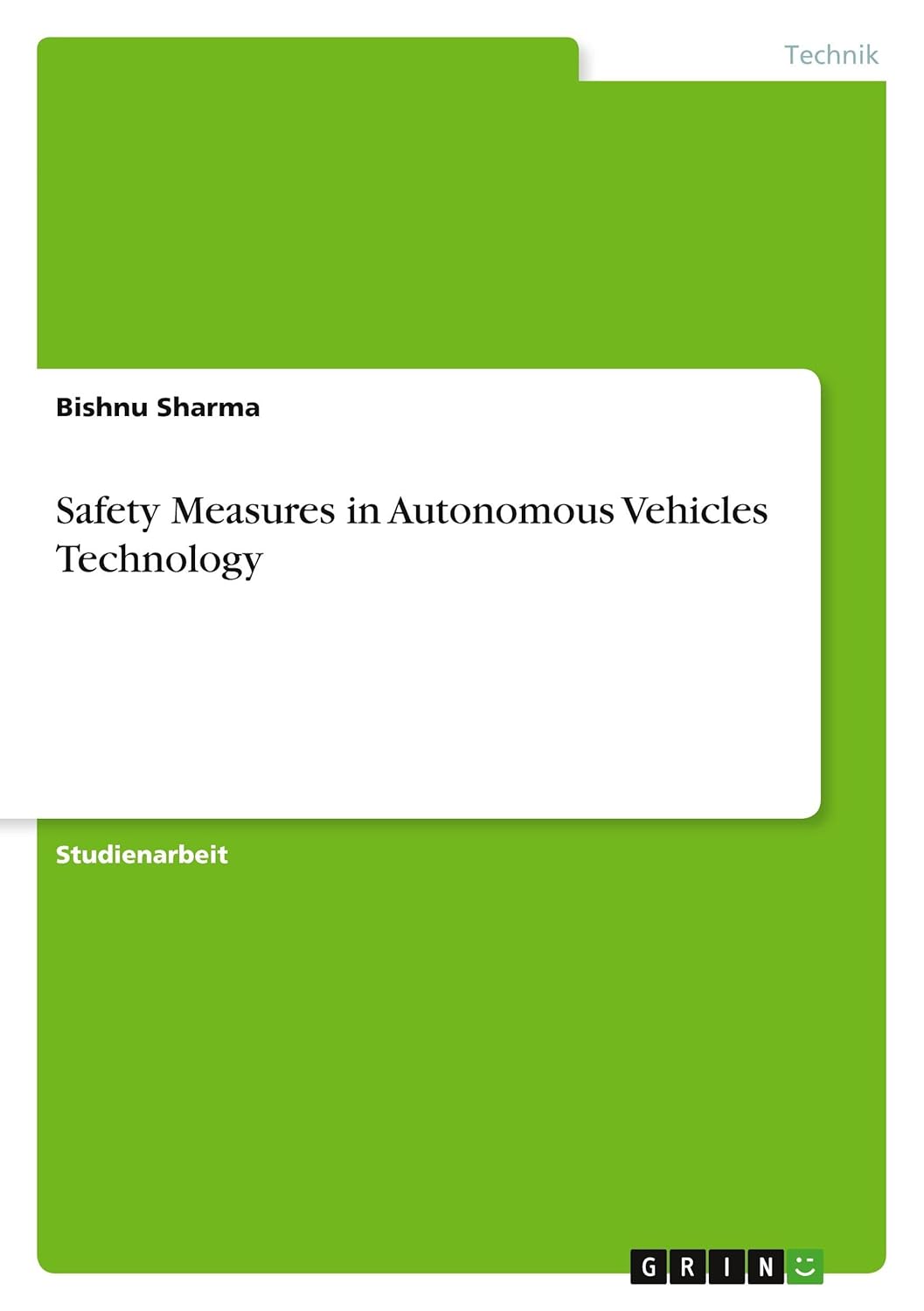
Safety Measures in Autonomous Vehicles Technology (German Edition)
Price: $36.50
(as of Dec 17,2024 05:28:06 UTC – Details)
Publisher : Grin Verlag (July 21, 2022)
Language : German
Paperback : 24 pages
ISBN-10 : 3346704866
ISBN-13 : 978-3346704863
Item Weight : 1.59 ounces
Dimensions : 5.83 x 0.06 x 8.27 inches
Sicherheitsmaßnahmen in der Technologie autonomer FahrzeugeDie Technologie autonomer Fahrzeuge hat in den letzten Jahren große Fortschritte gemacht und wird voraussichtlich in naher Zukunft eine wichtige Rolle im Straßenverkehr spielen. Doch mit dieser Innovation kommen auch neue Sicherheitsanforderungen, die berücksichtigt werden müssen, um Unfälle zu vermeiden und die Fahrt für alle Verkehrsteilnehmer sicher zu gestalten.
1. Sensoren und Kameras: Autonome Fahrzeuge sind mit einer Vielzahl von Sensoren und Kameras ausgestattet, die ihre Umgebung überwachen und Informationen sammeln, um sicher zu navigieren. Diese Geräte müssen regelmäßig gewartet und kalibriert werden, um eine genaue und zuverlässige Leistung zu gewährleisten.
2. Notfall-Stoppsysteme: Autonome Fahrzeuge sollten über Notfall-Stoppsysteme verfügen, die aktiviert werden können, um das Fahrzeug sicher zum Stillstand zu bringen, falls ein Problem oder ein Hindernis auftritt.
3. Datensicherheit: Da autonome Fahrzeuge eine Vielzahl von Daten sammeln und übertragen, ist es wichtig, dass diese Informationen sicher und vor unbefugtem Zugriff geschützt sind. Die Fahrzeughersteller sollten daher robuste Sicherheitsmaßnahmen implementieren, um die Integrität der Daten zu gewährleisten.
4. Menschliche Überwachung: Obwohl autonome Fahrzeuge dazu in der Lage sind, eigenständig zu fahren, ist es wichtig, dass ein Mensch die Fahrt überwacht und im Notfall eingreifen kann. Dieser menschliche Fahrer sollte angemessen geschult sein und in der Lage sein, schnell auf unvorhergesehene Situationen zu reagieren.
Insgesamt sind Sicherheitsmaßnahmen in der Technologie autonomer Fahrzeuge von entscheidender Bedeutung, um die Sicherheit von Fahrern, Passagieren und anderen Verkehrsteilnehmern zu gewährleisten. Durch die Implementierung dieser Maßnahmen können autonome Fahrzeuge sicher und effizient auf den Straßen unterwegs sein.
#Safety #Measures #Autonomous #Vehicles #Technology #German #Edition
Securing Your Data Center: Safety Measures to Keep Your Facility Running Smoothly
In today’s digital age, data centers play a crucial role in storing and processing vast amounts of information for businesses and organizations. With so much sensitive data at stake, it is imperative to implement robust security measures to protect the facility from potential threats. Here are some safety measures to keep your data center running smoothly:1. Access Control: Limiting access to your data center is the first line of defense against unauthorized entry. Implementing a strict access control policy, including key card entry systems, biometric scanners, and security guards, can help prevent unauthorized individuals from gaining access to your facility.
2. Surveillance Cameras: Installing surveillance cameras throughout your data center can help monitor activity and deter potential intruders. Make sure to position cameras in key areas, such as entry and exit points, server rooms, and equipment racks, to ensure comprehensive coverage.
3. Fire Detection and Suppression Systems: Data centers house a large amount of electrical equipment, making them susceptible to fire hazards. Installing fire detection and suppression systems, such as smoke detectors, fire alarms, and sprinkler systems, can help prevent and mitigate the impact of a fire on your facility.
4. Environmental Monitoring: Environmental factors, such as temperature and humidity, can impact the performance and reliability of your data center equipment. Implementing environmental monitoring systems can help detect and alert you to any fluctuations in these conditions, allowing you to take corrective action before they cause damage to your equipment.
5. Redundant Power Supply: Power outages can disrupt operations and potentially lead to data loss in a data center. Implementing a redundant power supply, such as uninterruptible power supply (UPS) units and backup generators, can ensure that your facility remains operational in the event of a power outage.
6. Data Encryption: Encrypting data at rest and in transit can help prevent unauthorized access to sensitive information stored in your data center. Implementing encryption protocols and using secure communication channels can help protect your data from potential breaches.
7. Regular Security Audits: Conducting regular security audits and assessments can help identify vulnerabilities in your data center’s security infrastructure and address them before they are exploited by malicious actors. Work with cybersecurity professionals to perform thorough assessments and implement necessary security improvements.
In conclusion, securing your data center is essential to ensure the safety and integrity of the sensitive information stored within the facility. By implementing robust security measures, such as access control, surveillance cameras, fire detection and suppression systems, environmental monitoring, redundant power supply, data encryption, and regular security audits, you can protect your data center from potential threats and keep it running smoothly. Remember that investing in comprehensive security measures now can save you from costly data breaches and downtime in the future.
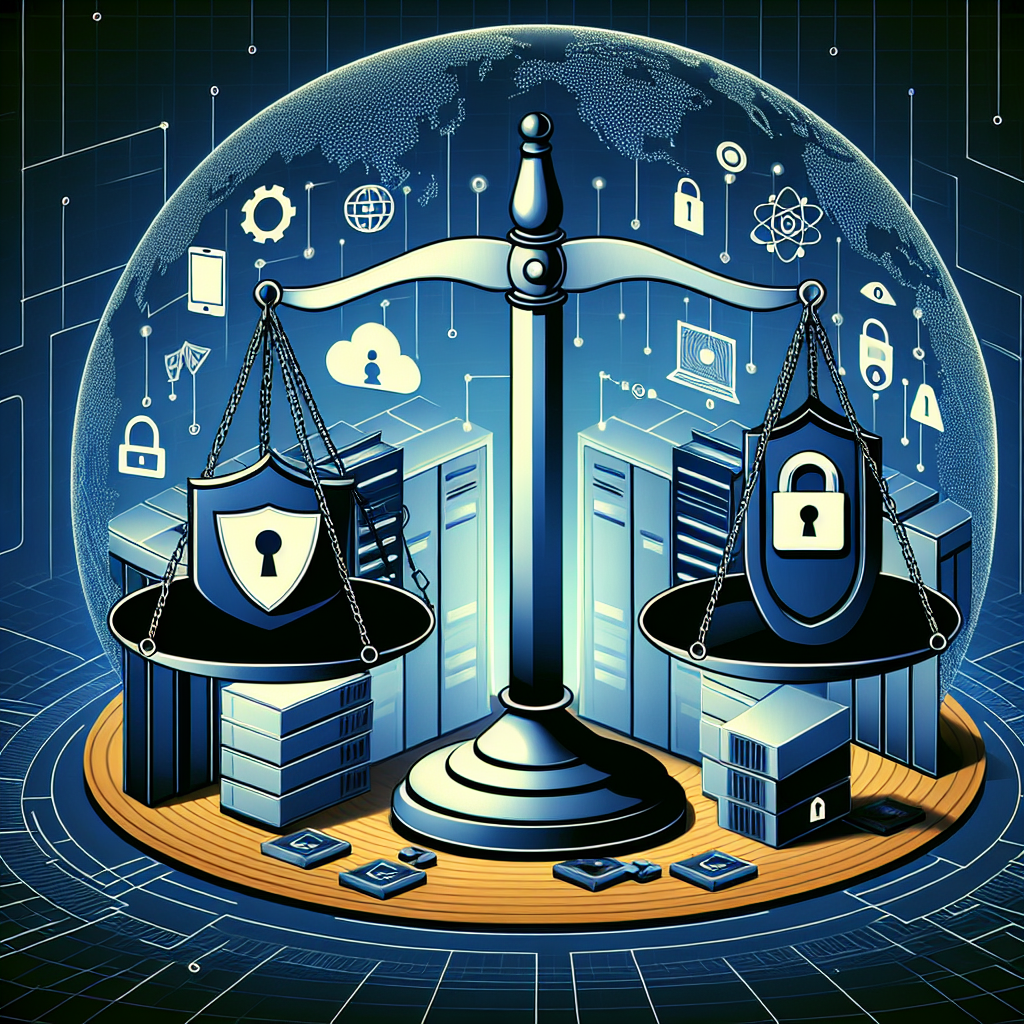
Data Center Risk Assessment: Evaluating Security Protocols and Measures to Safeguard Your Infrastructure
Data centers play a crucial role in the modern digital landscape, serving as the backbone of countless organizations’ IT infrastructure. With the increasing reliance on data centers for storing and processing sensitive information, it has become more important than ever to assess and evaluate the security protocols and measures in place to safeguard these facilities.Data center risk assessment is a critical process that involves identifying potential vulnerabilities and threats to the infrastructure, as well as evaluating the effectiveness of existing security measures. By conducting a thorough assessment, organizations can proactively identify and address security gaps, reducing the risk of data breaches and cyber attacks.
One of the key components of a data center risk assessment is evaluating physical security measures. This includes assessing access control systems, surveillance cameras, and security personnel to ensure that only authorized individuals have access to the facility. Additionally, organizations should consider implementing measures such as biometric authentication and mantraps to further enhance physical security.
In addition to physical security, organizations must also evaluate the effectiveness of their cybersecurity measures. This includes assessing firewalls, intrusion detection systems, and encryption protocols to prevent unauthorized access to the network and protect sensitive data. Regular penetration testing and vulnerability assessments can help identify weaknesses in the system and ensure that security measures are up to date.
Another important aspect of data center risk assessment is evaluating the resilience of the infrastructure. This includes assessing the facility’s backup power systems, cooling systems, and disaster recovery plans to ensure that the data center can continue to operate in the event of a power outage or natural disaster. Regular testing and maintenance of these systems are essential to minimize downtime and ensure business continuity.
Ultimately, data center risk assessment is a continuous process that requires ongoing monitoring and evaluation of security protocols and measures. By proactively identifying and addressing vulnerabilities, organizations can reduce the risk of data breaches and ensure the security of their infrastructure. Investing in robust security measures and regularly assessing their effectiveness is essential to safeguarding sensitive information and maintaining the integrity of the data center.
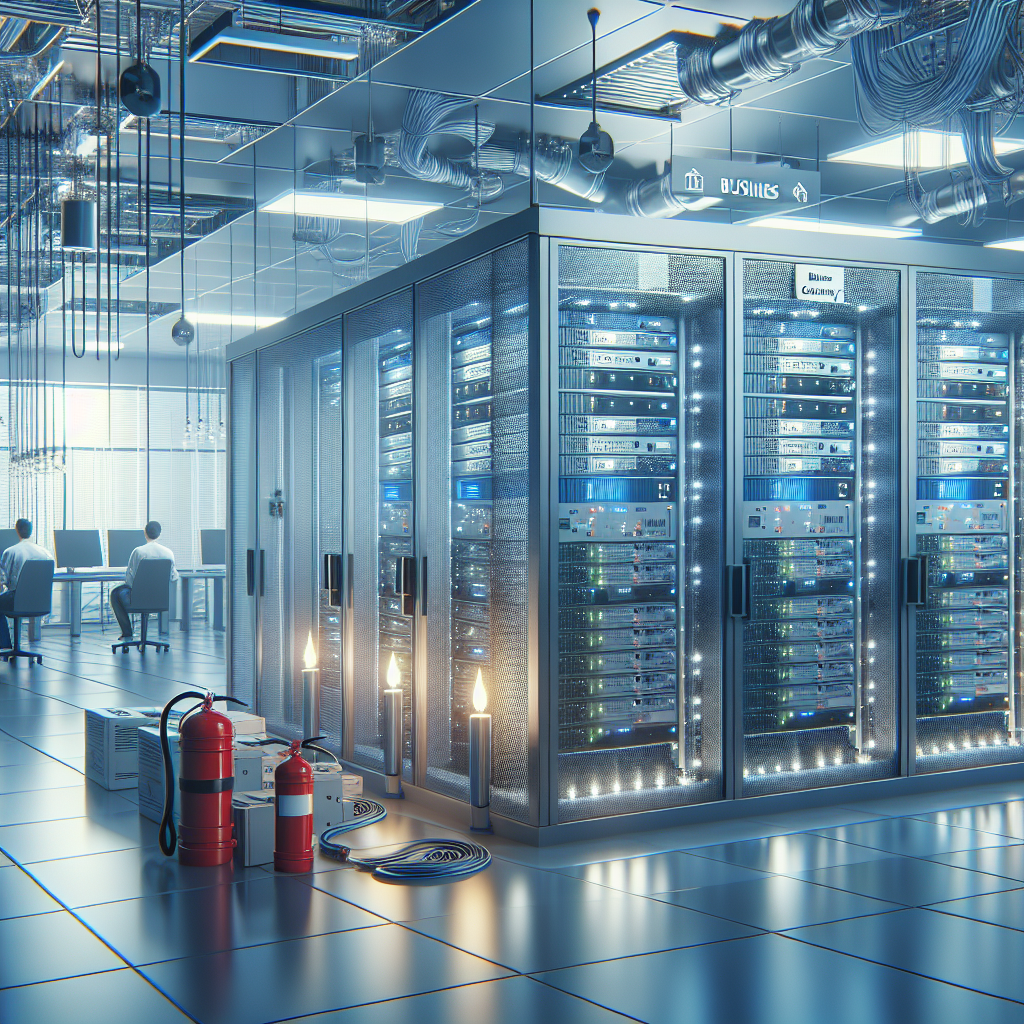
Protecting Your Data Center: Business Continuity Measures to Minimize Downtime
In today’s digital world, data centers play a crucial role in storing and managing vast amounts of information for businesses. However, with the increasing reliance on technology, data centers are becoming more vulnerable to cyberattacks, natural disasters, and other unforeseen events that can disrupt operations and lead to costly downtime.To protect your data center and ensure business continuity, it is essential to implement measures that minimize downtime and mitigate potential risks. Here are some key strategies to consider:
1. Regular Backups: One of the most important measures for protecting your data center is to regularly backup your data. This ensures that in the event of a cyberattack, hardware failure, or natural disaster, you can quickly recover your information and minimize downtime. It is recommended to have both onsite and offsite backups to ensure redundancy and data availability.
2. Disaster Recovery Plan: Developing a comprehensive disaster recovery plan is essential for minimizing downtime and ensuring business continuity. This plan should outline the steps to be taken in the event of a data center outage, including who is responsible for what tasks, how to restore data, and how to communicate with stakeholders.
3. Redundant Systems: To minimize downtime and ensure continuous operations, it is important to implement redundant systems in your data center. This includes redundant power supplies, cooling systems, and network connections to ensure that if one system fails, there is a backup in place to keep operations running smoothly.
4. Monitoring and Maintenance: Regular monitoring and maintenance of your data center infrastructure is crucial for identifying potential issues before they escalate into downtime. Implementing monitoring tools that can alert you to any anomalies or potential failures can help you proactively address issues and prevent downtime.
5. Security Measures: Protecting your data center from cyber threats is essential for ensuring business continuity. Implementing robust security measures, such as firewalls, antivirus software, and intrusion detection systems, can help prevent unauthorized access and data breaches that can lead to downtime.
6. Employee Training: Educating your employees on best practices for data center security and disaster recovery is essential for minimizing downtime. By ensuring that your staff is aware of potential risks and knows how to respond in the event of an outage, you can mitigate the impact of downtime on your business operations.
In conclusion, protecting your data center and ensuring business continuity requires a proactive approach that addresses potential risks and vulnerabilities. By implementing measures such as regular backups, disaster recovery plans, redundant systems, monitoring and maintenance, security measures, and employee training, you can minimize downtime and keep your operations running smoothly in the face of unforeseen events. Prioritizing data center protection is essential for safeguarding your business’s most valuable asset – its data.
